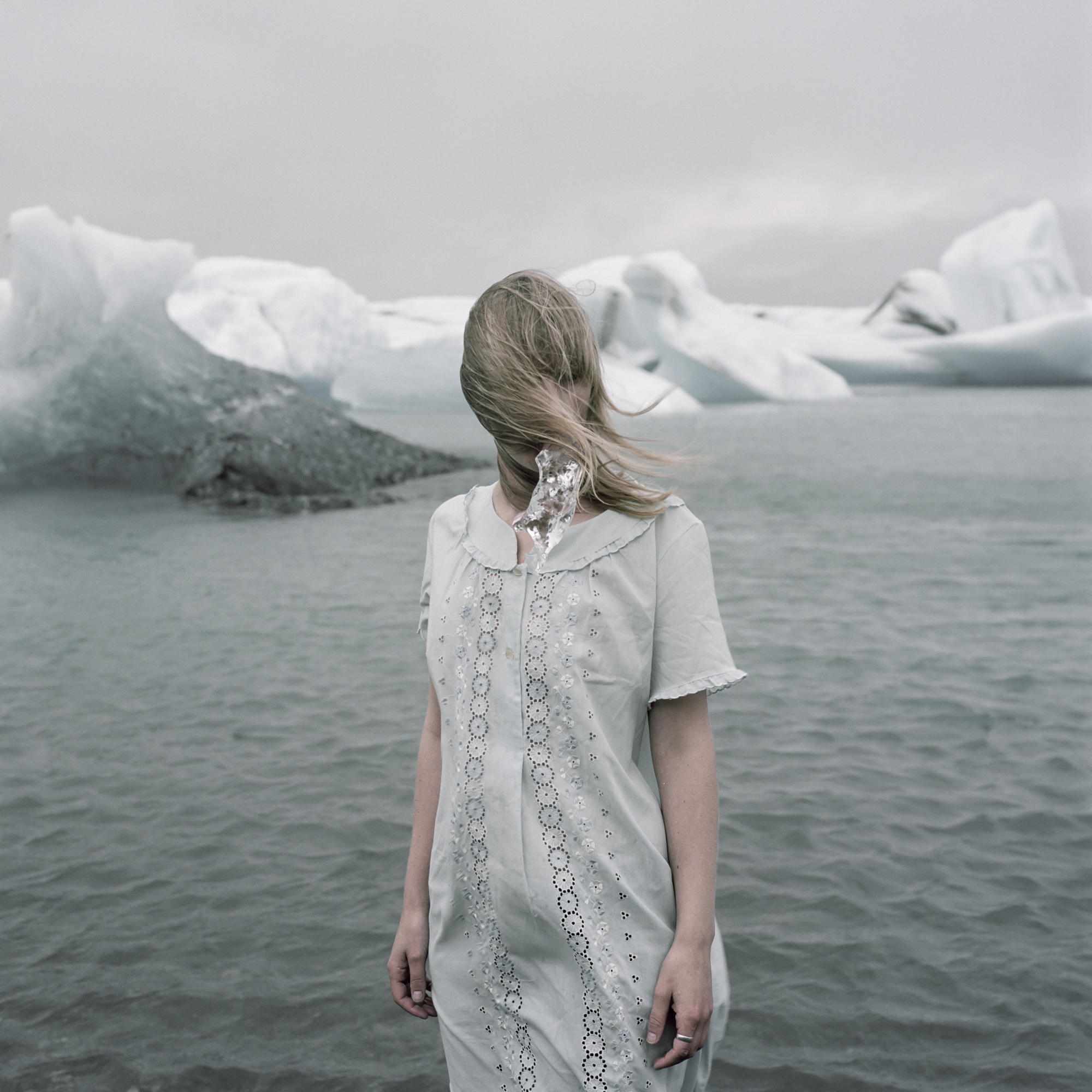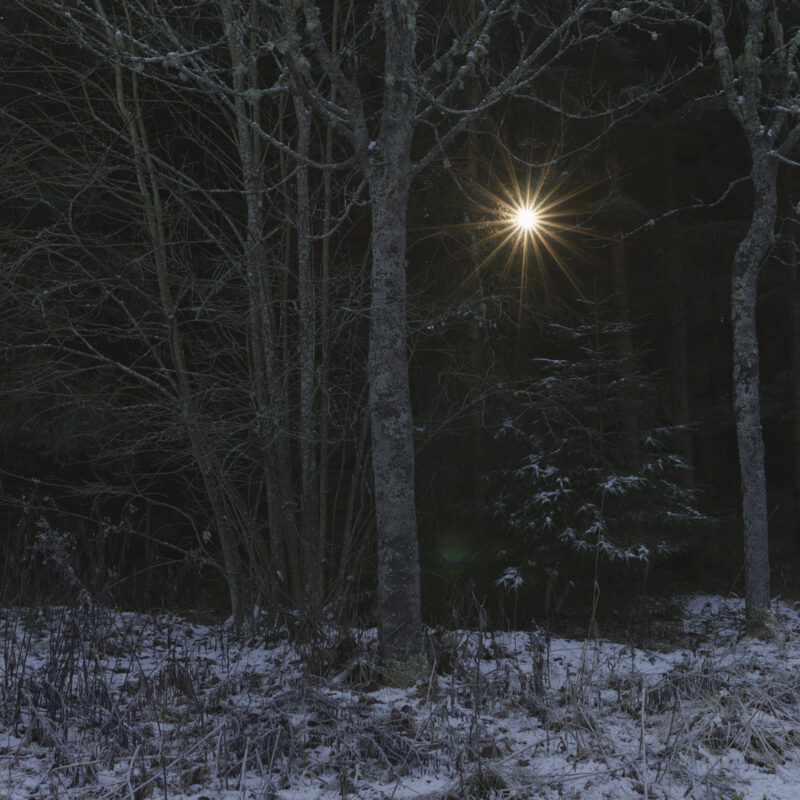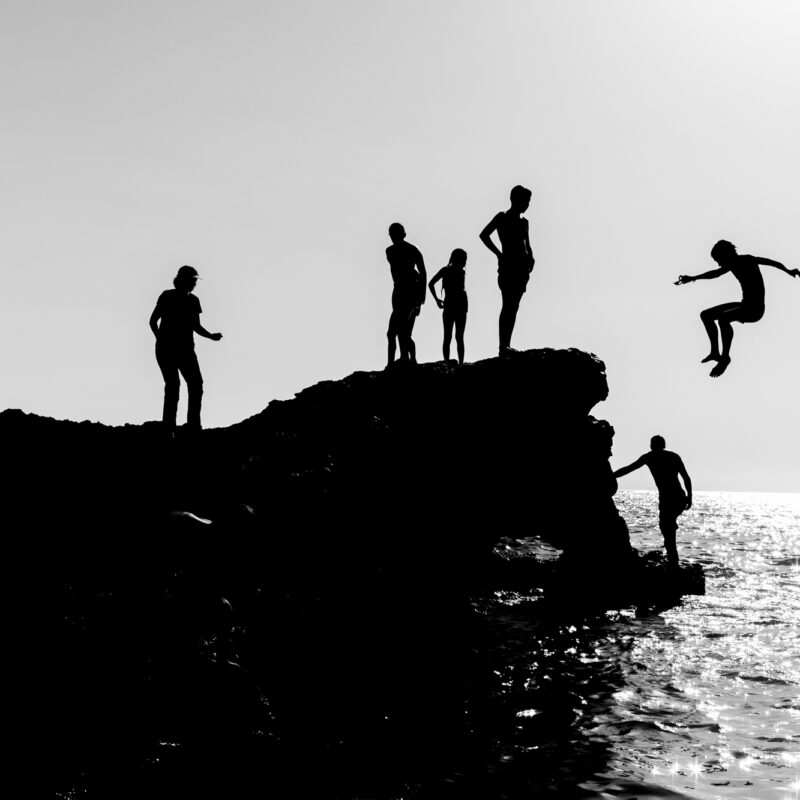Ciao Nina, puoi parlarci di te e di come hai cominciato con la fotografia?
Sono nata nel 1983 in un piccolo paese in Bavaria, nel sud della Germania. Non ho mai studiato fotografia, per questo vorrei dire che non possiedo una formazione fotografica o nulla di simile. Piuttosto ho un approccio interdisciplinare alla fotografia. Il mio lavoro è spesso caratterizzato da una sorta di performance per la fotocamera. Nel 2020 ho concluso il mio dottorato nel campo della ricerca artistica. Il mio oggetto di ricerca riguarda le forme del lasciarsi andare e la contingenza nella fotografia di scena.
Quando sono arrivata alla Bauhaus University di Weimar, nel 2009, per studiare arte mediatica volevo incentrare i miei studi su film e regia. Oggi non so perché, ma all’inizio dei miei studi a Weimar ero alla ricerca una sorta di mentore e sfortunatamente il mio insegnante di corso non lo era. Almeno non per me. Anzi, ero molto delusa. Sono approdata alla fotografia perché mi sono sentita magicamente attratta dall’idea romantica di lavorare per conto mio, senza un grande team cinematografico, ad esempio. La quasi totalità della mia cerchia di amici all’epoca era formata da futuri fotografi.
Com’è nato “über das verschwinden”?
La sequenza “über das verschwinden” mostra un approccio poetico al concetto di scomparsa. È stata realizzata prevalentemente in Islanda, motivo per cui alcune idee sono legate alla scomparsa di fenomeni naturali effimeri. La formazione di ghiaccio o i ghiacciai sono sfortunatamente influenzati dal riscaldamento globale e, dunque, connesse a un’interpretazione biologica del concetto di “scomparsa”. Altre idee sono da intendere in termini metaforici e pongono quesiti sul perdersi e il ritrovarsi.
Quali sono le tue fonti di ispirazione?
La mia laurea magistrale in studi teatrali gioca un ruolo importante nel mio lavoro e ha condotto al mio interessamento per la fotografia di scena. Pertanto, uno dei miei scatti preferiti proviene dalla sequenza “The Valley” di Larry Sultans. Mostra un’attrice in tacchi a spillo bianchi e sembra come se i tre cani si stiano inchinando a lei. La piscina sullo sfondo forma il palco di un teatro, ma ciò che si vede non è del tutto finzione scenica. Una grande mescolanza tra realtà e set cinematografico.
Come trovi le tue storie? Qual è la prima cosa che fai prima di intraprendere un progetto?
Spesso avvio un progetto o un singolo soggetto con una certa idea o con immagini concrete nella mia testa. Durante la realizzazione di queste idee si scopre, a volte, che sono proprio le idee fissate nella mia testa a non rivelarsi particolarmente interessanti. Ecco perché necessito della possibilità di eventi imprevisti, che si verificano durante il processo fotografico.
Hello Nina, can you talk about you and how did you start with photography?
I was born in 1983 in a small town in Bavaria in the south of Germany. I never studied photography, so I would say that I have no photographic socialisation or anything like that. I have a rather interdisciplinary approach to photography. My work is often characterised by a kind of performance for the camera. In 2020, I finished my Ph.D. in the field of artistic research. My research topic deals with forms of letting go and contingency in staged photography.
When I came to the Bauhaus University in Weimar in 2009 to study media art, I actually wanted to focus my studies on film and directing. Today I don’t know why, but at the beginning of my studies in Weimar I was looking for a kind of mentor – and unfortunately the professor of my film seminar wasn’t that at all. Not for me, at least. On the contrary: I was very disillusioned.
I came to photography because I was magically attracted to the romantic idea of working on my own – without a big film team, for example. Almost my entire circle of friends at that time consisted of future photographers.
How “über das verschwinden” is born?
The series “Über das verschwinden” shows a poetic approach to the concept of disappearance. The series was mainly created in Iceland, which is why some motifs are linked to the disappearance of ephemeral natural phenomena. Ice formations or glaciers are unfortunately affected by global warming and therefore linked to a biological interpretation of the concept of disappearance. Other motifs are to be understood more metaphorically and pose questions about losing and finding the self again.
Which are your inspirations?
My bachelor degree in theatre studies plays a big part in my work and has led to my focus on staged photography. One of my favourite photographs is therefore from Larry Sultan’s series »The valley«. It shows an actress in white stilettos and it seems as if three dogs are bowing to her. The pool in the background forms the stage of a theatre, but still it is not pure staged fiction that one sees. A great melange of reality and a film set.
How did you find your stories? What is the first thing that you make before start a project?
I often start a project or a single motif with a certain idea or concrete images in my head. During the realisation of these ideas, it sometimes turns out that it is precisely the fixed ideas in my head that do not turn out to be particularly exciting. That’s why I need the possibility of unplannable events happening during the photographic process.
More on:
instagram ninaroeder

















